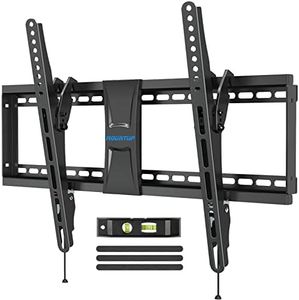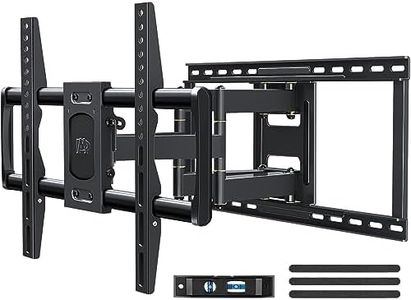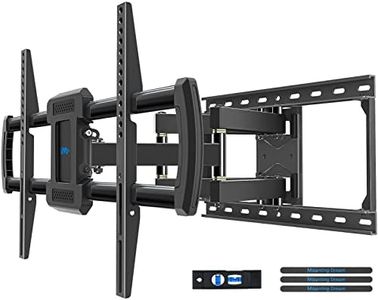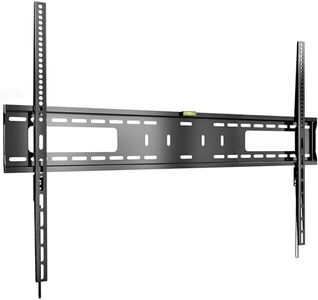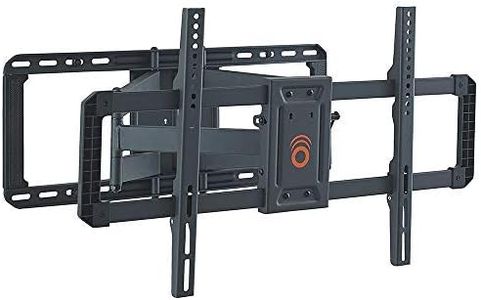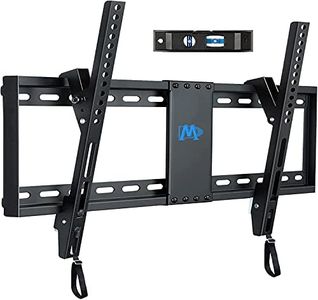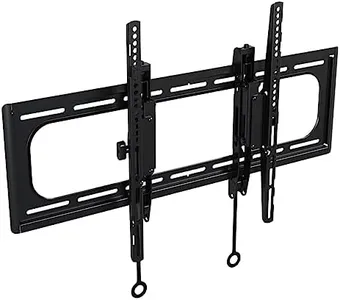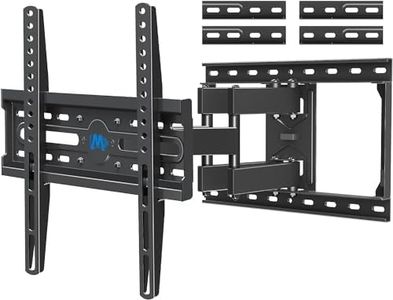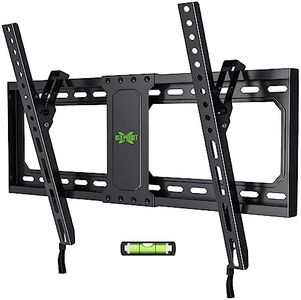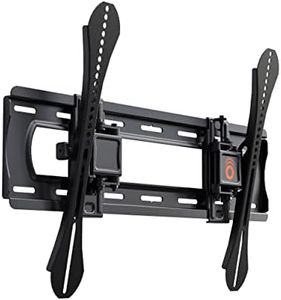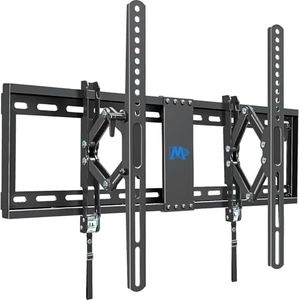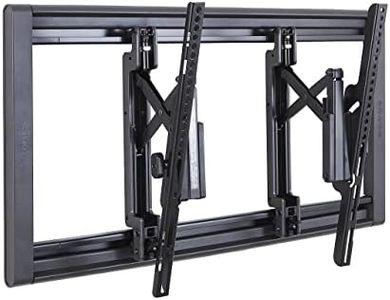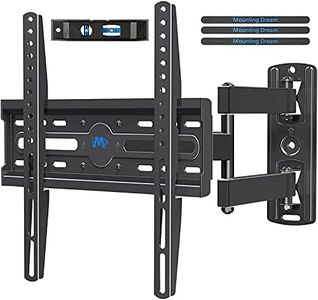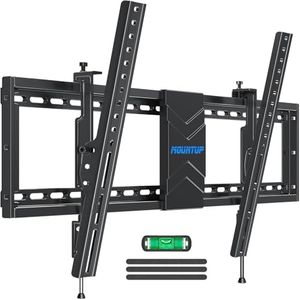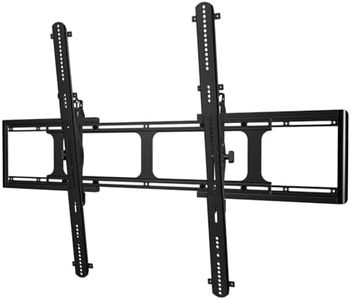We Use CookiesWe use cookies to enhance the security, performance,
functionality and for analytical and promotional activities. By continuing to browse this site you
are agreeing to our privacy policy
10 Best Tilting TV Wall Mount
From leading brands and best sellers available on the web.Buying Guide for the Best Tilting TV Wall Mount
Choosing a tilting TV wall mount is a smart way to save floor space, make your room look tidy, and get a better viewing experience. The goal is to make sure the TV is securely mounted at the right height and angle for comfortable watching. There are a few key features you should understand to pick a wall mount that matches your TV and suits your room setup. Knowing these will help you find a safe, easy-to-use, and long-lasting mount.TV Size CompatibilityThis indicates the range of TV sizes the wall mount can support, usually given in inches. This is important because using a wall mount that’s too small or too big for your TV can result in poor stability or even damage. Wall mounts are typically divided into small (up to 32 inches), medium (32-55 inches), and large (55 inches and above). Always check your TV's size and get a mount with a range that includes your screen. This ensures a proper fit and maximum safety.
Weight CapacityThe weight capacity tells you how much weight the wall mount can hold. This is crucial because exceeding this limit can make the installation unsafe. Wall mounts often support different weight ranges, such as up to 40 lbs (for small TVs), 40-80 lbs (for medium TVs), and over 80 lbs (for large or heavy TVs). To pick the right one, check your TV’s weight in its manual or on the back and select a mount that supports at least this much, preferably a bit higher for safety.
VESA CompatibilityVESA compatibility refers to the pattern of mounting holes on the back of your TV, measured in millimeters (like 100x100, 200x200, 400x400, etc.). This is important because the wall mount arms must line up with your TV’s mounting holes. These patterns are usually grouped in small (up to 200x200), medium (200x200 to 400x400), and large (above 400x400). Check your TV’s manual or back panel for its VESA measurements, and pick a mount that matches exactly.
Tilt RangeTilt range shows how much you can angle the TV up or down once it’s on the wall. This helps reduce glare and gives a better viewing angle, especially if the TV is mounted higher than eye level. Typical mounts tilt anywhere from 5 up to 15 degrees. If your seating is low compared to the TV, a wider tilt range may be helpful, while setups where the TV is at eye level will need little or no tilt.
Wall Type CompatibilityWall mounts are designed for specific wall types, such as drywall with wooden studs, concrete, or brick. This is vital because mounting on the wrong wall type can make the installation unsafe. Some mounts are universal, but others require you to buy the right anchors or hardware. Check your wall first—if you have drywall, make sure your mount can secure into studs; if you have masonry, look for one that comes with or supports masonry anchors.
Profile (Distance From Wall)The profile is the distance between the wall and the back of the TV when mounted. A low profile keeps the TV close to the wall for a clean look, while a larger profile allows more tilt and space for cable connections. Low-profile mounts (1-2 inches from the wall) are best for a minimalist look, while deeper profiles (3-5 inches or more) help if you need to plug in lots of cables or want more tilt.
Ease of InstallationEase of installation refers to how straightforward the wall mount is to put up, including clear instructions, included hardware, and features like built-in levelers. Some mounts have more parts and take longer to install, while others are designed for quick assembly. If you’re handy with tools, you might be fine with a complex mount, but if you prefer a simple process, look for a mount that comes with all parts included and clear guidance.
